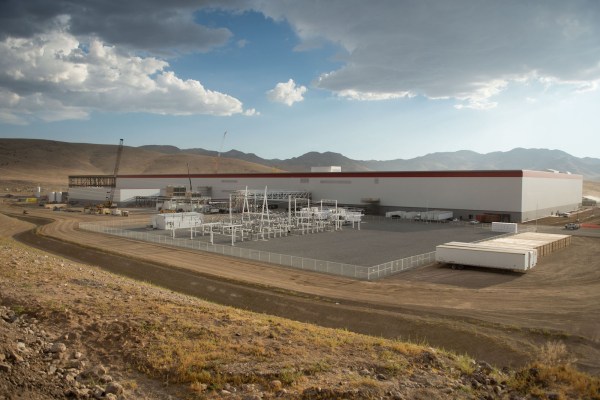Tesla’s massive Nevada Gigafactory has started producing lithium-ion battery cells in mass capacity, with the aim of supplying products including the upcoming Model 3 electric vehicle and the Powerwall 2 home energy supply unit, and the Powerpack 2 commercial solar energy storage product. It’s a big step for the automaker, since production volume of the batteries it produces with partner Panasonic will be a key choke point in terms of ramping production and making good on Model 3 delivery timelines.
The Gigafactory officially held its grand opening last year, but its focus thus far has been on assembling prior products like the original Powerwall, and preparing the facility for production of next-gen products at scale; Panasonic and Tesla’s new jointly designed cylindrical 2170 cells in particular, which is aimed at optimizing performance for cost in a form factor that can be used both at home and in vehicles. Production of the 2170 for qualification, which is to say for testing and quality assurance purposes ahead of mass production, started in December.
Starting today, cells made in the Gigafactory will be used in production Powerwall 2 and Powerpack 2 unit, and the aim is to start building battery cells destined for Model 3 cars starting in the second quarter of 2017. Tesla says it aims to have capacity ramped to the point where its production of lithium-ion cells tops 35 GWh/year, which is almost at the current electric battery production capacity of all the world’s suppliers combined.
While the Gigafactory is operational, it is far from complete – the design Tesla used allows it to open different phases for business as construction finishes on each, which is what will help them use it to build production batteries now, but also scale to much greater production capacity over time. At the current stage, the factory is under 30 percent done, yet still manages to occupy 1.9 million square feet, Tesla says, with interior operational space of 4.9 million square feet total because of how it’s using different floors.
The Gigafactory is looking to not only satisfy Tesla’s growing demand in terms of volume, but also drop the individual cost of batteries through se of automated production capacity, and improved processes that will result in fewer units being discarded for defects and failure to meet standards after they’re produced. Tesla also notes that despite its use of highly automated production line tech, the Gigafactory will itself eventually employ 6,500 people directly.
Tesla reported Tuesday that it built 83,922 vehicles across 2016, but delivered 76,230, under its target of 80,000 for the year. It cited missed shipping cut-offs and also production challenges caused by the shift to Tesla HW2 sensor packages in Model X and S vehicles, which changes the sensor and on-board computing load out to pave the way for eventual introduction of full self-driving features. Still, boosted battery production will definitely contribute to Tesla being able to meet its goals in the future.
